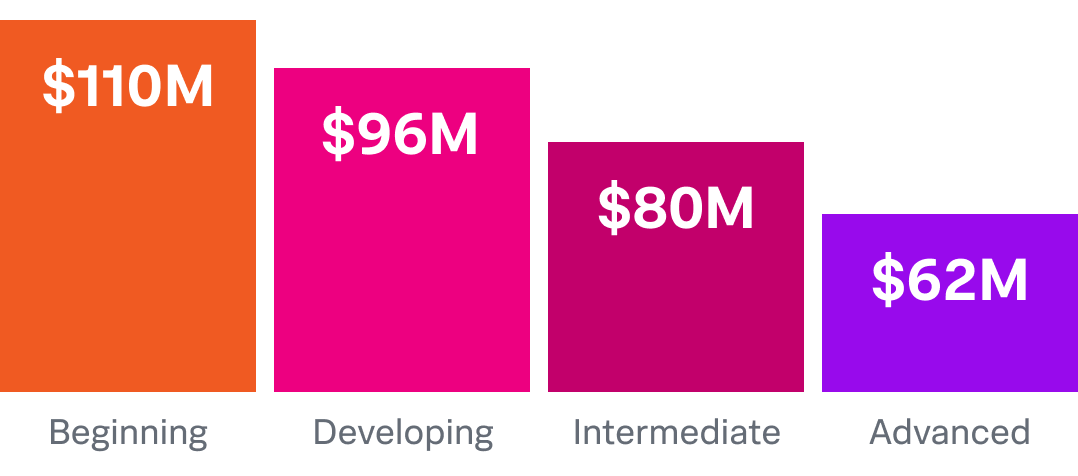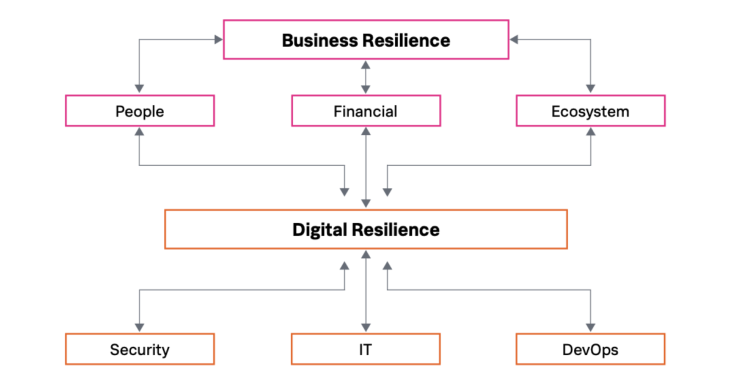Five key resilience capabilities
We asked respondents to answer 26 questions about five key capabilities to assess their resilience maturity. These questions probed on specific aspects of each capability, such as data coverage across hybrid and multicloud environments, alert triage, sharing data across security, IT and DevOps and more.
Visibility
How well teams can see across their technology environment, including quality and fidelity of data and completeness of coverage
Detection
How well organizations use data to search for potential issues and accelerate analysis, including enrichment, threat hunting and searching logs, metrics and traces
Investigation
How well organizations use data to search for potential issues and accelerate analysis, including enrichment, threat hunting and searching logs, metrics and traces
Response
How quickly security, IT and DevOps teams respond to day-to-day issues or incidents
Collaboration
How well teams and the tools they use facilitate working cross functionally across security, IT and DevOps







